We republish a speech delivered by Billard Leece Partnership (BLP) Health Lead, Tracy Lord, at the 2023 UIA World Congress of Architects in Copenhagen.

January 21st, 2024
We often design environments to meet gender-specific requirements, whether due to religious, cultural or lifestyle needs, but how do you navigate buildings when you are mis-gendered, non-binary or unsure of your gender identity? What barriers do we intrinsically create in architecture by applying gender to places, and how do we shift this to focus on inclusivity?

While working with the Youth Participation and Engagement Team at Orygen in a consultative design process for the Orygen Building in Australia, the facility architects came to understand that one of the biggest issues of concern for young people was the inclusion of design for the LGBTQIA+ community, particularly in relation to gender and sexual orientation. Standard design solutions for amenities can become continually confrontational for these groups, but is it as easy as making them all gender-neutral? And in what other ways do we unconsciously exclude them?
The Orygen project serves as a case study in the review of gender-inclusive spaces, as it sought to provide environments for youth who seek assistance for mental health issues. In studying this project, we understand that we cannot design spaces for non-binary or mis-gendered people solely based on historical information and research. The multitude of current issues can only be understood by direct engagement and including these people in the design process. Here, I want to review issues of gender inclusivity and gender neutrality, and the importance of inclusion in the design and consultation process.

1. Addressing Gender Inequality in Design
To achieve gender neutrality, we must first strive for gender equality. Design should not only cater to neutral spaces but also actively address gender inequity for women, trans and non-binary individuals. This includes reframing client briefs and design strategies beyond the male worldview.

2. The Influence of Cisgender-Centric Spaces
Neutral spaces often get dominated by cis-men, which can restrict access for others. To truly ensure inclusion, it’s necessary to move away from cisgender-centric design, an idea often referred to as ‘trans theory.’

3. Beyond Bathroom Design: Recognising Other Gender-Biased Spaces
Voice-assist technologies like Siri and Alexa often assign gender roles, with female voices used for service tasks and male voices for more authoritative roles. The world’s first genderless voice, ‘Q,’ challenges this norm and pushes toward true gender neutrality.

4. Breaking Gender Norms in Fashion
Non-binary fashion brands are emerging, reflecting the younger generation’s demand for non-binary, environmentally sustainable clothing. Examples include Selfridges’ concept retail spaces, which provoke conversations about gender-targeting in fashion and retail.
Related: Campbelltown Hospital by BLP

5. Transgender Architecture: Unearthing Historical Precedence
Historically, architecture has incorporated elements of gender fluidity, as exemplified by the Roman columns: Doric (masculine), Ionic (feminine), and Corinthian (a hybrid of both).

6. Responding to the Market Demand for Inclusion
The younger workforce and consumers demand inclusive environments that align with their beliefs. Research indicates that Generation Z, making up 24 per cent of the workforce in 2020, is highly invested in cultural inclusivity, sustainability and work-life balance.

7. Addressing Social Infrastructure Design for Inclusion
Inclusion must be a priority when designing health and educational facilities. Gender diverse individuals often avoid accessing health services due to discomfort and alienation, indicating a need for more inclusive design in these areas.

8. Orygen Project: A Case Study in Inclusive Design
BLP’s Orygen project illustrates that inclusive design requires listening to those with lived experience of gender diversity and continually updating the design process accordingly. More research and conversation around the impacts of gender neutrality and fluidity in design are needed.

This text is republished from a White Paper by BLP Health Lead, Tracy Lord.
Photography (Orygen and OYH Parkville)
Ian ten Seldam, John Gollings AM
We think you might also like this news on the return of Architecture with Pride in 2024.
INDESIGN is on instagram
Follow @indesignlive
A searchable and comprehensive guide for specifying leading products and their suppliers
Keep up to date with the latest and greatest from our industry BFF's!
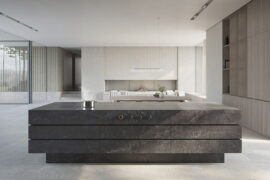
For those who appreciate form as much as function, Gaggenau’s latest induction innovation delivers sculpted precision and effortless flexibility, disappearing seamlessly into the surface when not in use.
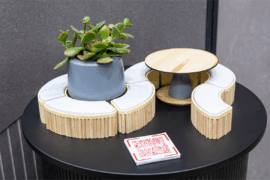
From the spark of an idea on the page to the launch of new pieces in a showroom is a journey every aspiring industrial and furnishing designer imagines making.
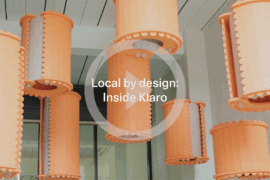
In an industry where design intent is often diluted by value management and procurement pressures, Klaro Industrial Design positions manufacturing as a creative ally – allowing commercial interior designers to deliver unique pieces aligned to the project’s original vision.
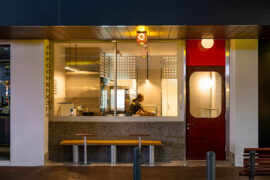
Working within a narrow, linear tenancy, Sans Arc has reconfigured the traditional circulation pathway, giving customers a front row seat to the theatre of Shadow Baking.
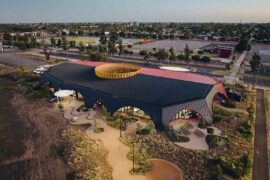
At the Munarra Centre for Regional Excellence on Yorta Yorta Country in Victoria, ARM Architecture and Milliken use PrintWorks™ technology to translate First Nations narratives into a layered, community-led floorscape.

The Simple Living Passage marks the final project in the Simple World series by Jenchieh Hung + Kulthida Songkittipakdee of HAS design and research, transforming a retail walkway in Hefei into a reflective public space shaped by timber and movement.
The internet never sleeps! Here's the stuff you might have missed

Trust sits at the core of Everton Buildings’ new office, where Ambit Curator was given licence to move beyond convention and deliver a workplace defined by vision, materiality and assured detail.

Good looks count, but function completes the space.

In an industry where design intent is often diluted by value management and procurement pressures, Klaro Industrial Design positions manufacturing as a creative ally – allowing commercial interior designers to deliver unique pieces aligned to the project’s original vision.